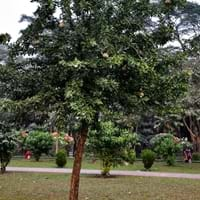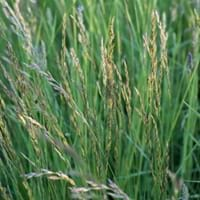Life Span
Perennial
Annual
Origin
Bangladesh, India, Pakistan, Sri Lanka, Tropical Indomalaya
Eastern Europe, Northern Europe, Russia/Siberia, Western Asia
Types
Not Available
Not Available
Habitat
Dry areas
Grassland
USDA Hardiness Zone
Not Available
3-7
AHS Heat Zone
Not Available
7 - 1
Sunset Zone
Not Available
A2, A3, 1a, 1b, 2a, 2b, 3a, 3b, 4, 5, 6, 15, 16, 17
Habit
Not Available
Clump-Forming
Flower Color
White
Not Available
Flower Color Modifier
Not Available
Bicolor
Fruit Color
Greyish Brown, Light Green, Not Available
Not Available
Leaf Color in Spring
Green
Dark Green
Leaf Color in Summer
Dark Green
Light Green
Leaf Color in Fall
Green
Dark Green
Leaf Color in Winter
Gray Green
Dark Green
Leaf Shape
Ovate
Grass like
Plant Season
Autumn
Spring, Summer, Fall, Winter
Sunlight
Full Sun, Partial Sun
Full Sun, Partial Sun
Type of Soil
Rich
Clay, Loam
The pH of Soil
Acidic, Neutral
Acidic, Neutral, Alkaline
Soil Drainage
Well drained
Average
Bloom Time
Late Fall
Summer
Tolerances
Drought
Not Available
Where to Plant?
Ground, Pot
Ground
How to Plant?
Budding, Layering, root cutting, Seedlings
Seedlings
Plant Maintenance
Low
Medium
Watering Requirements
Do not water excessively
Medium
In Summer
Lots of watering
Lots of watering
In Spring
Moderate
Moderate
In Winter
Average Water
Average Water
Soil pH
Acidic, Neutral
Acidic, Neutral, Alkaline
Soil Type
Rich
Clay, Loam
Soil Drainage Capacity
Well drained
Average
Sun Exposure
Full Sun, Partial Sun
Full Sun, Partial Sun
Pruning
Prune after harvesting, Remove dead or diseased plant parts
Remove damaged leaves, Remove dead branches, Remove dead leaves
Fertilizers
for fruiting plants, use high phosphorous content fertilizer
All-Purpose Liquid Fertilizer
Pests and Diseases
Not Available
Red blotch
Plant Tolerance
Drought
Drought
Flower Petal Number
Single
Single
Fragrant Bark/Stem
No
Yes
Foliage Texture
Medium
Fine
Foliage Sheen
Matte
Glossy
Attracts
Not Available
Cattle and horses
Allergy
Gastric
Heartburn, Nausea, Stomach pain
Aesthetic Uses
Not Used For Aesthetic Purpose
Showy Purposes, small hedge
Beauty Benefits
Good Cleanser
Not Available
Edible Uses
Yes
Sometimes
Environmental Uses
Not Available
Air purification
Medicinal Uses
Blood cleanser, Diabetes, Ear ache, Energy, Kidney problems, Liver Protection, Malaria, Respiratory Disorders, scurvy, Snakebite
Cancer, Diarrhea, Haemorrhages, Malaria
Part of Plant Used
Fruits
Leaves, Root
Other Uses
Used As Food, Used for its medicinal properties
cultivated as pasture or hay crop, Used as a golf course turf, Used for pasture
Used As Indoor Plant
No
No
Used As Outdoor Plant
Yes
Yes
Garden Design
Edible, Fruit Tree
Lawns and Turf
Botanical Name
Limonia acidissima
LOLIUM perenne
Common Name
Wood apple, monkey fruit, curd fruit
Perennial Ryegrass
In Hindi
कबिट
Lolium perenne
In German
Indischer Holzapfel
Lolium perenne
In French
Kawista
Lolium perenne
In Spanish
Kawista
Lolium perenne
In Greek
γλυκό ασβέστη
Lolium perenne
In Portuguese
Limonia
Lolium perenne
In Polish
Feronia słoniowa
Lolium perenne
In Latin
dulcis ad cinerem
Lolium perenne
Phylum
Magnoliophyta
Magnoliophyta
Class
Magnoliopsida
Liliopsida
Order
Sapindales
Cyperales
Clade
Angiosperms, Eudicots
Angiosperms, Commelinids, Monocots
Tribe
Citreae
Not Available
Subfamily
Aurantioideae
Not Available
Number of Species
Not Available
Difference Between Wood Apple and Perennial Ryegrass
If you are confused whether Wood Apple or Perennial Ryegrass are same, here are some features about those plants to help you choose better. Many people think that these two plants have the same characteristics, but one can see Wood Apple and Perennial Ryegrass Information and learn more about it. Fertilizers required for proper growth of Wood Apple are for fruiting plants, use high phosphorous content fertilizer, whereas for Perennial Ryegrass fertilizers required are All-Purpose Liquid Fertilizer. Hence, one should know the basic difference between Wood Apple and Perennial Ryegrass if you are planning to have them in your garden to enhance its beauty.
<
Flowering PlantsImportance of Wood Apple and Perennial Ryegrass
Want to have the most appropriate plant for your garden? You might want to know the importance of Wood Apple and Perennial Ryegrass. Basically, these two plants vary in many aspects. Compare Wood Apple and Perennial Ryegrass as they differ in many characteristics such as their life, care, benefits, facts, etc. Every gardener must at least have the slightest clue about the plants he wants to plant in his garden. Compare their benefits, which differ in many ways like facts and uses. The medicinal use of Wood Apple is Blood cleanser, Diabetes, Ear ache, Energy, Kidney problems, Liver Protection, Malaria, Respiratory Disorders, scurvy and Snakebite whereas of Perennial Ryegrass is Cancer, Diarrhea, Haemorrhages and Malaria. Wood Apple has beauty benefits as follows: Good Cleanser while Perennial Ryegrass has beauty benefits as follows: Good Cleanser.
Compare Facts of Wood Apple vs Perennial Ryegrass
How to choose the best garden plant for your garden depending upon its facts? Here garden plant comparison will help you to solve this query. Compare the facts of Wood Apple vs Perennial Ryegrass and know which one to choose. As garden plants have benefits and other uses, allergy is also a major drawback of plants for some people. Allergic reactions of Wood Apple are Gastric whereas of Perennial Ryegrass have Heartburn, Nausea and Stomach pain respectively. Having a fruit bearing plant in your garden can be a plus point of your garden. Wood Apple has no showy fruits and Perennial Ryegrass has no showy fruits. Also Wood Apple is not flowering and Perennial Ryegrass is not flowering . You can compare Wood Apple and Perennial Ryegrass facts and facts of other plants too.





